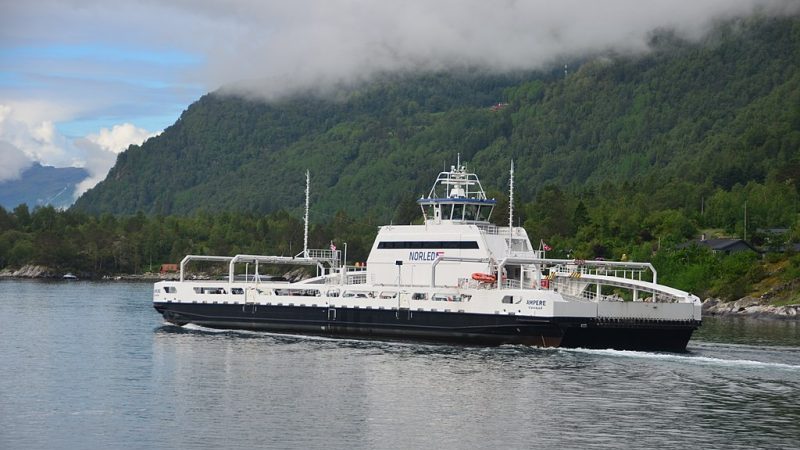As the engine of global trade, the shipping industry is instrumental – and, broadly speaking, invisible – in our daily lives. 90% of the world’s goods are transported by ship, and seaborne trade supports the economies of developed and developing nations alike.
The industry is also a large emitter – accounting for around 2.4% of global greenhouse gas (GHG) emissions, equivalent to Germany. These emissions do not fall within the scope of the Paris Agreement, with the burden of reducing this GHG contribution falling instead to shipping’s regulating body – the International Maritime Organization (IMO), a specialised agency of the UN.
Historic inaction on the part of the IMO – which has had to contend with both a historically conservative industry, as well as powerful lobbyists in some of the world’s largest ‘flag states’ – now sees shipping’s GHG emissions edge perilously close to endangering the Paris Agreement’s less-than-2C of warming target if dramatic changes are not made soon.
The onus is now on the shipping industry to demonstrate real progress in terms of its emissions. The IMO has yet to implement any plans to reduce GHGs, but that is due to change at the organisation’s Marine Environment Protection Committee (MEPC) meeting this week.
In an industry where the assets – ships – last for up to 25 years, there is an understandable tendency to be risk-averse. Despite this, the very nomenclature of shipping’s environmental impact has changed markedly over the last two years. In the last 18 months “decarbonisation” has fully entered the lexicon – alongside a slew of buzzwords reflecting the biggest changes happening in the sector.
Report: UN, EU climate chiefs call for ambitious shipping strategy from IMO
All of this is welcome news for those focusing on shipping’s environmental impact, for while actual regulatory progress has been limited, these changes at least reflect a shift in mindset. There is plenty of cause for the IMO to be ambitious with its targets.
Tremendous investment has been made in recent years in a range of new fuel and technology solutions to help shipping mitigate its environmental impact. Currently the industry burns a range of heavy fuel oils and residual oil products left over from hydrocarbon cracking in refineries. These fuels are extremely carbon intensive – and so one of shipping’s main priorities is to pioneer alternative, low- and zero-carbon fuels to help manage its decarbonisation pathway.
The solutions are diverse – with electricity, hydrogen, ammonia and biofuels all viable options for various segments of the industry. These are supported by a raft of proven efficiency technologies already available on the market, including digital performance management, energy-saving Flettner rotors and air lubrication systems.
This isn’t futuregazing – already we have witnessed the electrification of inland and short-sea shipping routes in Northern Europe; and some of the biggest companies within the industry are implementing high-impact energy-efficiency retrofits. Paired with further development of new fuels it is clear that powerful factors are now combining to build pressure on the IMO from across the supply chain.
This week’s meeting marks a chance for shipping to finally set itself on an ambitious and encompassing decarbonisation strategy. To match Paris, shipping must achieve a 70-100% emissions reduction by 2050. While difficult, a recent OECD International Transport Forum report concluded that with currently and developing fuels and technologies, this goal is by no means impossible to achieve.
Timelapse video: shipping first as LNG tanker crosses Arctic in winter
The full strategy will come into force by 2023, and at just under five years away, that puts the vast majority of the global fleet in the crosshairs for competition in a changed landscape. What’s more, newbuilds ordered today will need to have mitigated against these policy changes before their first dry-dock, a scheduled maintenance period where ships can be modified.
While the IMO remains responsible for setting regulatory targets and ensuring that the industry complies with them through rigorous enforcement, this is not shipping’s issue alone. All companies with maritime transport within their supply chain have a role – remembering that this includes 90% of all goods globally. There is a huge community of organisations that have a shared responsibility to measure and verify their own supply chain emissions and have the power to influence change. We hope to see this practice increase.
There are further levers. By engaging with the companies they invest in and finance, investors and financiers should – and in some cases have a fiduciary duty to – ensure that companies are not only preparing to comply with regulations, but remain competitive under them.
We have yet to see sector-wide engagement between these groups, but a clear policy signal from the IMO will kick-start this practice across the industry, steering capital away from those companies unable or unwilling to embrace decarbonisation.
What this all makes plain is that low-carbon shipping is not a pipe dream. In many respects, the catalysts for this change are already in place, and are becoming a commercial reality for the sector. However, shipping’s regulators must send a strong, clear policy signal to the world, so that an ambitious pledge can be met with equally ambitious actions.
James Mitchell is a shipping and finance expert at Carbon War Room
